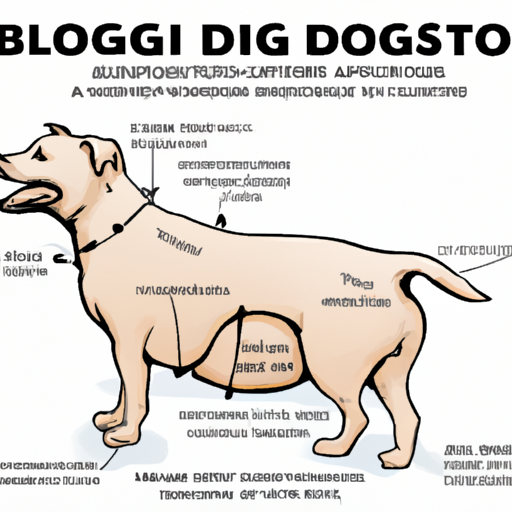As a caregiver, understanding the causes of bloat in dogs not only enables you to prevent this life-threatening condition but also ensures prompt treatment when necessary. This article delves into the causes of bloat in dogs, signs to look out for, and preventative measures to take.
1. Understanding Bloat in Dogs
Bloat, medically known as Gastric Dilatation-Volvulus (GDV), is a serious, life-threatening condition that affects dogs. It occurs when a dog’s stomach becomes filled with gas, food, or fluid, causing it to expand dangerously. This can lead to the stomach twisting, preventing anything from exiting the stomach, and cutting off the blood supply.
2. Causes of Bloat in Dogs
Bloat in dogs can be caused by various factors, often related to the dog’s eating habits and lifestyle. Let’s take a look at them:
-
Eating Habits: Rapid eating, eating one large meal daily, eating from an elevated bowl, and consuming high-volume, low-calorie diets can cause bloat.
-
Physical Attributes: Large breed dogs with deep, narrow chests are more prone to bloat. Some of these breeds include Great Danes, Saint Bernards, and Weimaraners.
-
Stress Factors: Stressful situations such as kenneling, long car rides, and other major changes in routine can also contribute to the development of bloat.
-
Exercise: Rigorous exercise after eating can cause bloat in dogs.
-
Age and Gender: Older dogs and males are more likely to suffer from bloat.
| Risk Factor | Description |
|---|---|
| Eating Habits | Rapid eating, consuming large meals, using elevated bowls |
| Physical Attributes | Deep, narrow chest |
| Stress Factors | Major routine changes, long car rides |
| Exercise | High-intensity activity after eating |
| Age and Gender | Older, male dogs are at higher risk |
3. Signs and Symptoms of Bloat in Dogs
As a caregiver, recognizing the signs and symptoms of bloat is crucial in getting your furry friend the help they need. Common signs of bloat include:
- Distended, swollen abdomen
- Excessive drooling
- Restlessness or pacing
- Unsuccessful attempts to vomit
- Rapid breathing
- Pale gums
4. Prevention and Treatment of Bloat in Dogs
Preventing bloat involves modifying some of your dog’s habits:
- Feed your dog several small meals throughout the day instead of one large meal.
- Discourage rapid eating by using puzzle feeders or slow-feeding bowls.
- Avoid strenuous exercise before and after meals.
- Consider a prophylactic gastropexy surgery for at-risk breeds.
Treatment of bloat usually involves emergency veterinary attention, which may include decompression of the stomach and surgery.
5. Frequently Asked Questions
Q: Can small breed dogs get bloat?
A: Yes, but it’s less common than in large breed dogs.
Q: Is bloat painful for dogs?
A: Yes, bloat is an extremely painful condition.
Q: Can bloat in dogs resolve itself?
A: No, bloat is a life-threatening emergency that requires immediate veterinary care.
Q: Are some breeds more prone to bloat than others?
A: Yes, large breeds with deep chests are more susceptible.
With this knowledge, you can play a pivotal role in protecting your canine companion from this potentially fatal condition. Remember, immediate veterinary care is essential if you suspect your dog has bloat.



